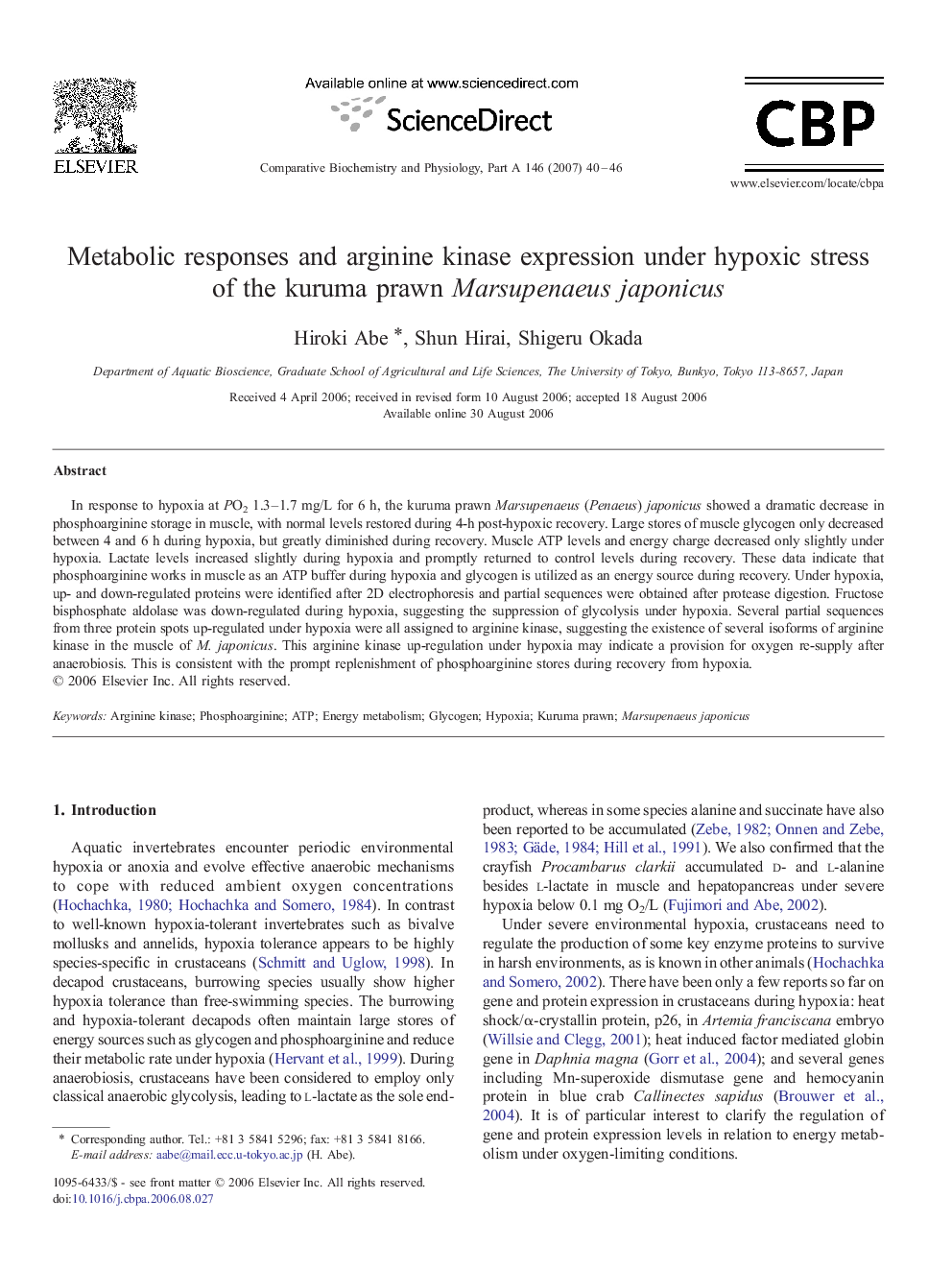| Article ID | Journal | Published Year | Pages | File Type |
|---|---|---|---|---|
| 1974902 | Comparative Biochemistry and Physiology Part A: Molecular & Integrative Physiology | 2007 | 7 Pages |
In response to hypoxia at PO2 1.3–1.7 mg/L for 6 h, the kuruma prawn Marsupenaeus (Penaeus) japonicus showed a dramatic decrease in phosphoarginine storage in muscle, with normal levels restored during 4-h post-hypoxic recovery. Large stores of muscle glycogen only decreased between 4 and 6 h during hypoxia, but greatly diminished during recovery. Muscle ATP levels and energy charge decreased only slightly under hypoxia. Lactate levels increased slightly during hypoxia and promptly returned to control levels during recovery. These data indicate that phosphoarginine works in muscle as an ATP buffer during hypoxia and glycogen is utilized as an energy source during recovery. Under hypoxia, up- and down-regulated proteins were identified after 2D electrophoresis and partial sequences were obtained after protease digestion. Fructose bisphosphate aldolase was down-regulated during hypoxia, suggesting the suppression of glycolysis under hypoxia. Several partial sequences from three protein spots up-regulated under hypoxia were all assigned to arginine kinase, suggesting the existence of several isoforms of arginine kinase in the muscle of M. japonicus. This arginine kinase up-regulation under hypoxia may indicate a provision for oxygen re-supply after anaerobiosis. This is consistent with the prompt replenishment of phosphoarginine stores during recovery from hypoxia.
